Originally written in 2021 after a little over 2 years of the lifestyle routine below. Updated often as I learn more.
Health level up!
Thanks for having interest in this new take on a millennia-old pie-hole stuffing lifestyle! Before refined grains. Before Nestle and Kellogg. Before the FDA and USDA were captured by various mega-big “food” corporations and Big Pharma. Before The Beatles. Before the InterWebs, even!
And now, before we dive in, let’s take off our clothes! You start. Kidding!
Warning about Ozempic
A newish dangerous drug growing in popularity, originally designed for diabetes, but now also being prescribed for weight loss. From “Ozempic face” to stomach paralysis to microbiome destruction to malnutrition, the health risks are high. Evidence here.
Quick background
I was diagnosed with type 2 diabetes in late 2016.
I put the condition into remission. End of story. Thanks for reading. Bye!
Oh? You want to know more?
It impacted my body in many ways, including:
– Loss of much muscle mass; so fatigue and loss of strength.
– Inflammation – expressing mostly as joint pain. Began around 2008.
– Nerve damage – about half of the area of both feet were numb and/or tingly, random sparks/tingles of various feelings, including pain throughout the body (felt like insect bites), and numbness in other areas. This included impotence! I started noticing these symptoms in early 2016. The only way I could sleep was to use a huge – and increasing – amounts of alternating between ibuprofen and acetaminophen, which barely worked. Eventually I discovered that consuming oil from weed before bed ensured sleep. A temporary remedy.
– Low energy.
– Foggy brain – I didn’t notice this until it changed. Clarity now!
– Drastically deteriorating vision, including the beginning of cataracts.
– In 2017 my A1C tested as 15.5. A1C is a measurement of blood/glucose level average over a 3-4 month period. 15.5 is considered extremely high.
– Super low testosterone levels. I didn’t know about this until 2018.
I had felt the approach of these symptoms for over a year prior to diagnosis and suspected something was up but was afraid to face it, so I avoided going to see a health care professional.
My diet leading up to diabetes was vegetarian plus occasional fish, chicken, turkey, and eggs. Never red meat. I often went 2 weeks or more without consuming any animal products.
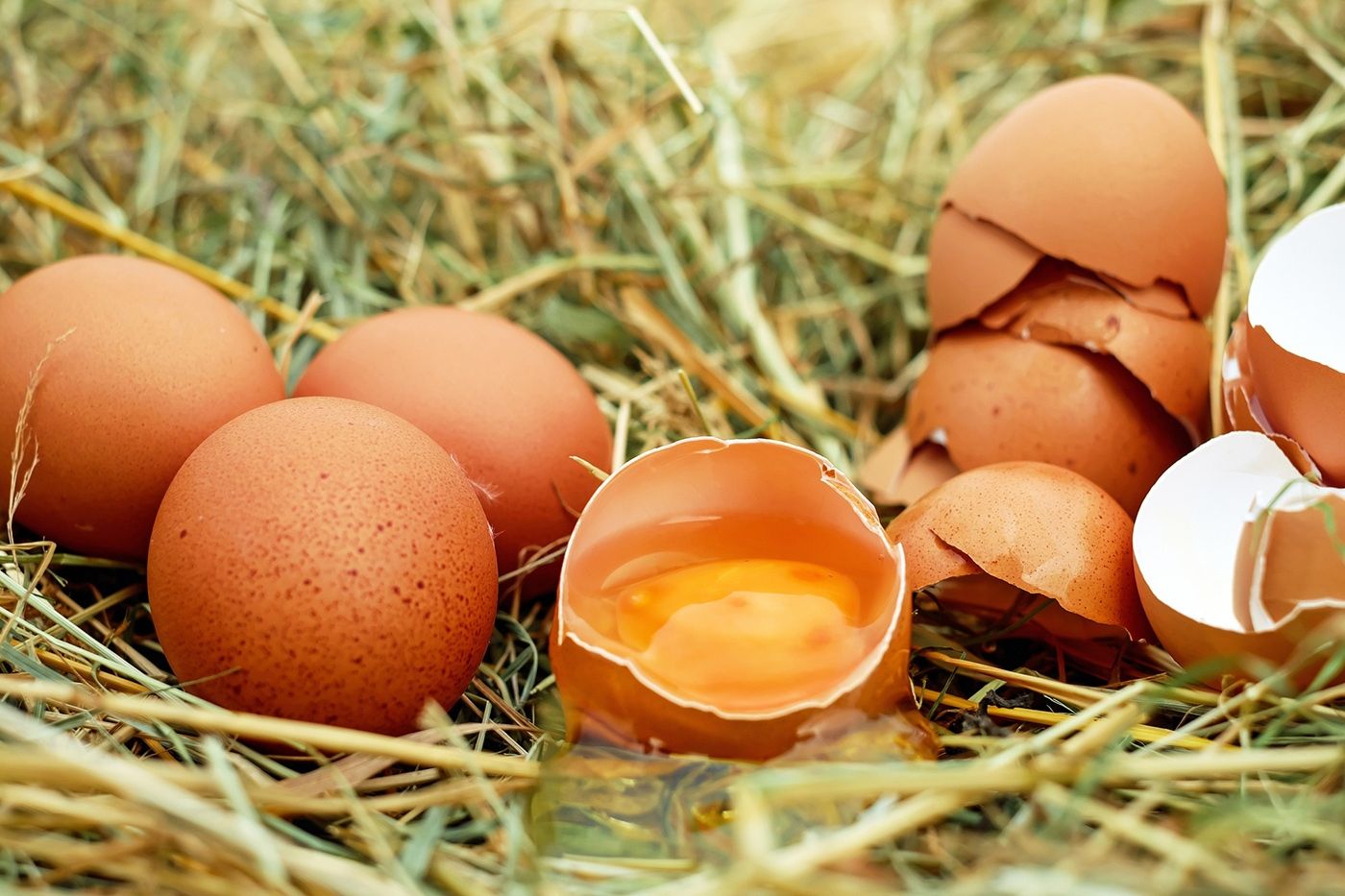
I didn’t have much of a taste for meat – especially fatty meat – so I ate it rarely. It was mostly a habit that started in my youth. Growing up, meat was not something we could often afford. Later, I read and believed some vegetarian and vegan propaganda.
I had not eaten beef, pork, lamb, or drank milk in over 26 years prior to the diabetes diagnosis. I ate an unrestricted amount of bread and pasta. I ate an unrestricted amount of rice, too. I also ate quite a bit of salad but used dressings with too many “vegetable” oils (omega 6 and chemicals, yay (sarcasm)). I thought honey and agave nectar were too healthy to worry about. I drank a lot of tea sweetened with those “healthy” sweeteners. Filtered water only.
I thought I was eating healthy. I didn’t know how the body converts carbs into sugars and the load they put on the body. I combined that manner of eating with an accident that broke some ribs, followed by another not long after healing, which is a lot of inactivity. I certainly didn’t know how that combo can lead to insulin resistance!
Experimenting on myself
For the story of how I reversed my diabetes, look here: https://clearsay.net/reversing-diabetes/
Keto to the rescue!
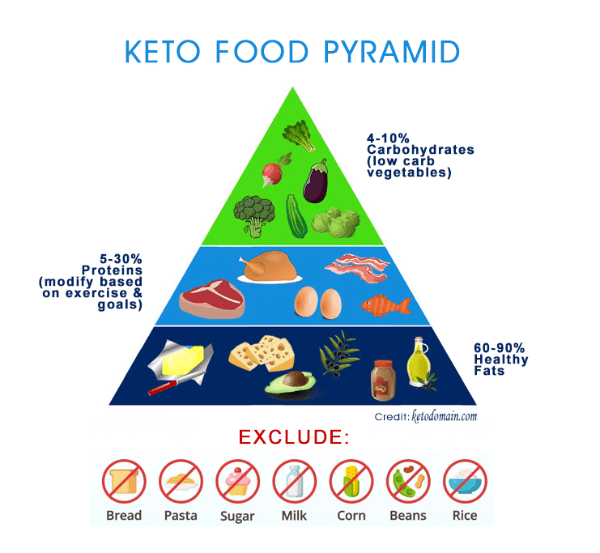
First, “keto” refers to a diet and a body state where we have conditioned our body to be in “ketosis,” where we can process ketones in addition to glucose for energy. Hybrid!
Is autophagy a fountain of Youth?
What is autophagy and why does it matter?
There is an important “garbage removal and repair” process human bodies do naturally, if given the chance, called autophagy.
Autophagy is the major eukaryotic degradative process for cytosolic organelles, long–lived proteins as well as misfolded protein aggregates, playing an important role in development, adaptation, starvation, tumor suppression, and aging as well as innate and adaptive immunity. Although mostly referred to strictly as a degradative process, autophagy is also often described as a renewal process; a pathway by which metabolites generated through autophagic degradation are reused either as sources of energy or building blocks for synthesis of new macromolecules.
Important take-away: Autophagy repairs cellular damage. New studies are even showing it can slow or even reverse some of the effects of aging! Important: For it to work, a person needs to give their digestive system breaks. Nothing drastic is required.

You can quickly and easily get into ketosis (body using ketones for energy instead of glucose) and autophagy.
A few days into my intermittent fasting (removed breakfast from diet and no night-time eating) with high fat, medium/low protein, and very low carbs and I put my body into a state of autophagy.
Day 125 into keto and intermittent fasting:
At least 2-4 times a week I cycle from two meals a day to one. The high fat intake means I have no cravings. Apparently, I’ve converted my body into a “hybrid” system (it’s natural state) that can easily utilize fat and ketones as well as the carbs it has been trained to use for energy. Fat falling off! Zero body pain. High levels of energy.
Where’s the evidence this lifestyle is working?
– All muscle, joint, and “phantom” pain gone! I can now dance or do Kung Fu for 2+ hours and have zero joint pain; it’s been a long time! I still get muscle pain, but it is the *good* kind because I’m quickly re-building massively atrophied muscles.
– I can sleep without drugging myself!
– Dry, scaly skin on my face gone.
– Higher testosterone (tested) – more energy, drive, and confidence.
– Some of my nerve damage has gone away, as in I can feel more parts of my feet now!
– Consistently high energy levels.
– An unintended side effect: I lost quite a bit of my body fat. As of day 160, I’ve put two new holes in my belt and cut three inches off the tip!
– Finally, in 2017 my A1C was 15.5% (extremely unhealthy; far into type 2 diabetes). As of latest test in mid-2021, it’s down to 5.6%! Under 5.7% is considered normal.

What is A1C? https://www.mayoclinic.org/tests-procedures/a1c-test/about/pac-20384643
DISCLAIMER
I’m not a biologist, doctor, physicist, oceanographer, cat trainer, astronaut, or dolphin therapist, so don’t believe anything I say or follow my advice, which this isn’t.
Now, let’s dive in to that fountain of youth!
How do I do it? The basics
– 50% to 70% healthy fats – see below.
– 10% to 30% proteins – depends on your age, types and frequency of exercise, and goals.
– 0% to 5% carbs – generally, less is better. Your body can easily survive on less than 10%. **Your body produces the glucose you need without a need for exogenous carbs**.
Begin by seeing how long you can fast into the day. If you abstained from eating anything past dinner the day before, you have already fasted 10-12 hours! The longer you extend that fast, the more autophagy!
The easiest way is to just remove breakfast completely or replace it with coffee that has no calories (creamers or other additives). Stevia and monk fruit don’t count (up to a point), so sweeten it if you need to, but only with those. **Never** with honey, agave, sugar, or processed sugar substitutes. Those increase your blood glucose levels and tend to spike insulin, which leads to insulin insensitivity.
Important note: Fructose (found in fruit, liquor, and more) is processed only by the liver and is in most ways worse than sucrose (sugar). Don’t confuse sucrose with sucralose. Sucralose is a neurotoxin akin to insecticides.
More below on sweeteners.
Don’t confuse habits with hunger!
If you get enough fats, you will find you don’t have hunger pangs! It takes time to change a habit. But if you eat enough healthy fats, you will be surprised how easy this is!
You will also – probably easily and naturally – start to want to experiment with putting off your meals longer and longer into the day and may even find yourself moving into a one meal a day pattern, which I believe to be optimal.
Exercise
This is highly subjective, of course. But with all my blood sugar testing, I found that a minimum of 30 minutes a day of light exercise (walking or bike riding) – for me – shows a noticeable impact on blood glucose levels. AND if you want to get more healthy, double or triple that number of minutes and throw in some higher intensity exercise and/or weight lifting. If you are diabetic like I was, the more exercise, the better. More muscle helps in MANY ways! Consider this: muscle consumes glucose. Think about it while you are working out. Let it add to your motivation to do more. Update: Lately, I’ve been weight training every other day consistently and noticing within 12 hours or so after lifting that it has a huge impact on my blood glucose levels! I’m talking 30-50 points on the deciliter meter!
“But gyms are expensive and lame!”
You might be surprised how cheap it can be to get a used weight bench, bars, and plates (weights) off Craigslist and Ebay. Add 12′ x 12′ modular interlocking “exercise foam mats” for just $20: https://amazon.com/Yes4All-Interlocking-Exercise-Foam-Border/dp/B07BF7F2PN

Shopping for health
In the following sections of this article, you will find many links to Amazon and other sources.
Break for bread
Addicted to sammiches, toast, or tortillas? While it’s best to let go of that addiction, there are some alternatives. For example: The bread below has 1g net carbs per slice!
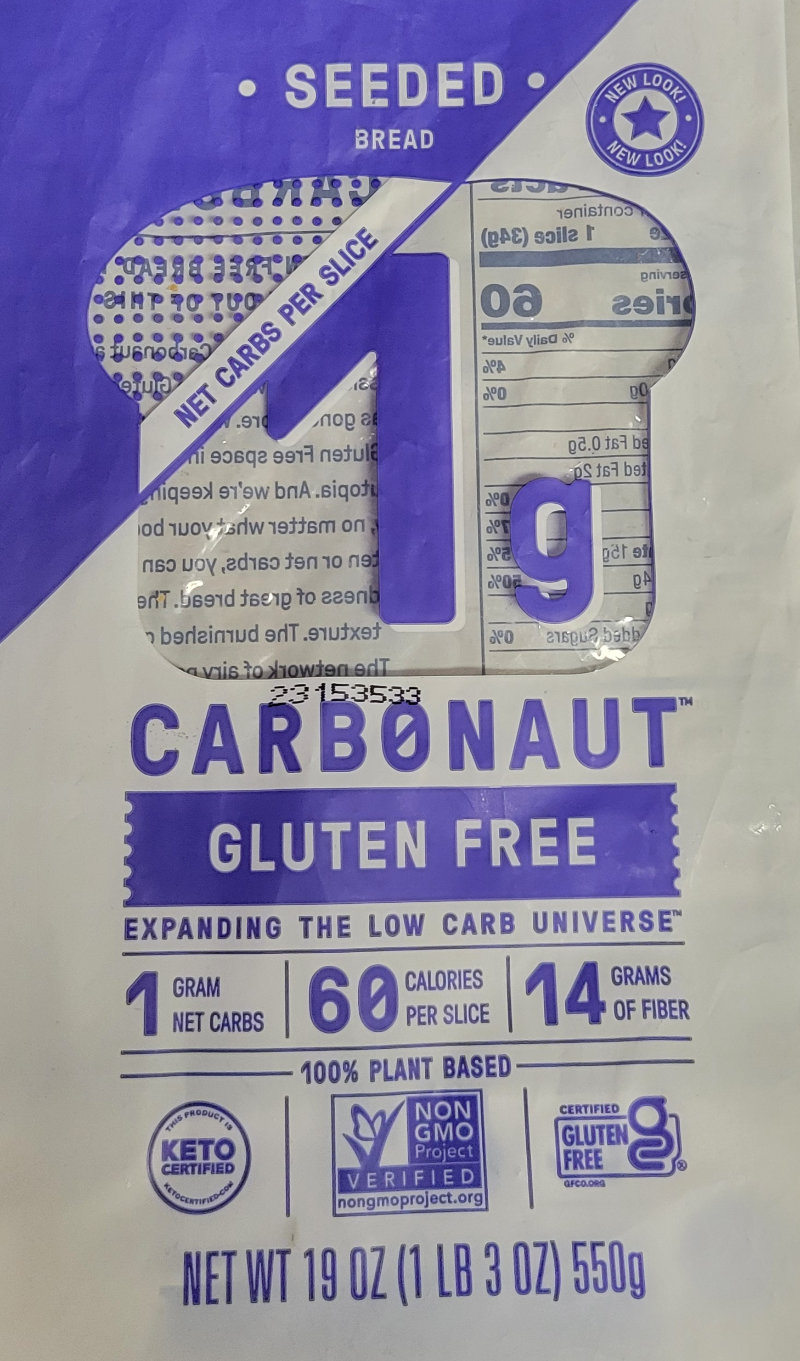
Another alternative is to bake your own using an alternative to wheat flour:
| Type of Flour | Carbs/g | Fiber/g | Net Carbs | Baking Tips |
|---|---|---|---|---|
| Psyllium husk powder | 0.110 | 0.773 | -0.663 | PRIMARY USE: Binding agent (not main flour). Add 1-2 tsp per recipe mixed into dry ingredients first to ensure even distribution. Creates gel-like consistency when hydrated – let sit 10 minutes after mixing. RATIO: 1 tsp psyllium per cup of other flour. Can replace 1 egg with 1 tsp psyllium + 3 tbsp water (let thicken 10 min). CAUTION: Can turn purple in alkaline recipes – add 1/4 tsp lemon juice/vinegar to prevent. Mix thoroughly to avoid clumps. Excellent for gluten-free bread elasticity and structure. |
| Chia seed flour | 0.170 | 0.560 | -0.390 | PRE-HYDRATION recommended: Soak 15-30 minutes before use to activate mucilage for better binding. TEXTURE: Adds mild nutty flavor and slight gummy texture. Best blended with other flours (use 10-20% of total flour mix). ABSORPTION: High water absorption – reduce other liquids by 10-15%. Excellent in muffins, quick breads, and cookies. Can replace eggs: 1 tbsp chia flour + 3 tbsp water = 1 egg. STORAGE: Refrigerate to prevent rancidity. Grind whole seeds fresh for best results. |
| Lupin flour | 0.040 | 0.367 | -0.327 | SUBSTITUTION RATIO: Replace up to 25-30% of wheat flour (1:1 ratio) or 50% of almond flour. FLAVOR MANAGEMENT: Mix with almond/coconut flour to reduce bitterness and beany taste. Avoid in delicate recipes (vanilla cakes, sugar cookies). TEXTURE: Denser than almond flour, creates chewier results – perfect for cookies and bread. LIQUID ADJUSTMENT: Requires slightly more liquid than almond flour due to lower fat content. Best in chocolate, nutty, or savory recipes where strong flavors can mask bitterness. Works well in yeast breads. |
| Flaxseed flour (defatted) | 0.070 | 0.227 | -0.157 | HIGHLY ABSORBENT: Use only 1/4 amount compared to other low-carb flours. LIQUID RATIO: Add 75% extra water by weight of flaxseed used (e.g., 30g flaxseed = 23g extra water). Mix into dry ingredients first. BINDING: Natural binding properties from mucilage – reduces need for eggs. TEXTURE: Creates dense, moist baked goods. Best combined with lighter flours. TEMPERATURE: May require lower oven temp (reduce by 25°F) to prevent over-browning. Excellent in quick breads and muffins. Natural omega-3 benefits. |
| Coconut flour | 0.540 | 0.580 | -0.040 | EXTREME ABSORPTION: Use only 1/4 to 1/3 cup coconut flour per 1 cup regular flour. EGGS ESSENTIAL: Add 1 extra egg per 1/4 cup coconut flour (typically 6 eggs per cup coconut flour). LIQUID RATIO: Equal amounts coconut flour to total liquid minimum. Let batter rest 5-10 minutes to fully hydrate. TECHNIQUE: Whip egg whites separately and fold in for lighter texture. Sift before use to prevent lumps. Best limited to 25% of total flour blend. STORAGE: Refrigerate/freeze due to shorter shelf life. |
| Keto wheat flour | 0.040 | 0.040 | 0.000 | DIRECT REPLACEMENT: Use 1:1 substitution for regular wheat flour in most recipes. Contains vital wheat gluten for structure but significantly reduced carbs (80% fewer net carbs than regular flour). HANDLING: Mix and knead like traditional wheat flour. YEAST COMPATIBILITY: Works with yeast for bread making – increase liquid by 2 tbsp per cup flour. MIXING TIME: Requires only 5 minutes gentle kneading due to strong gluten. APPLICATIONS: Excellent for bread, pizza dough, and recipes requiring gluten structure. Note: Contains gluten – not suitable for celiac disease. LOW GLYCEMIC: Index of 31, load of 1. |
| Almond flour | 0.100 | 0.100 | 0.000 | MOST VERSATILE: Use 1:1 in most keto recipes. TEMPERATURE: Bake 25°F lower than wheat flour recipes to prevent over-browning. Watch carefully – browns faster than wheat. MOISTURE: Don't overbake – almond flour can dry out quickly. Cool completely before removing from pan for best texture and structure. FAT ADJUSTMENT: Reduce other fats in recipe due to high natural oil content (50% fat). STORAGE: Refrigerate opened packages, freeze for long-term. Room temperature ingredients essential – cold ingredients cause clumping. TEXTURE: Creates moist, tender crumb. |
| Hazelnut flour | 0.130 | 0.107 | 0.023 | STRONG FLAVOR: Rich, buttery taste – best in chocolate and coffee recipes where nutty flavor complements. TEMPERATURE SENSITIVE: More prone to burning due to higher fat content – reduce oven temp by 25-50°F and watch carefully. SUBSTITUTION: Can replace almond flour 1:1 but expect stronger flavor. Combine with milder flours for balance. TEXTURE: Creates rich, dense baked goods with weaker structure than almond flour due to lower protein. Sift before use for even texture. STORAGE: Freeze to prevent rancidity. Best in cookies, brownies, torta, and rich cakes. |
| Walnut flour | 0.140 | 0.097 | 0.043 | RICH FLAVOR: Best combined with other flours due to strong, slightly bitter taste (use 25-50% of total flour). COARSE TEXTURE: Grind finer if needed for delicate baked goods. Excellent for rustic textures in cookies and quick breads. BROWNING: May brown faster than other flours – cover with foil if needed. STORAGE: Freeze to maintain freshness due to high oil content. Can replace up to 50% almond flour in recipes. Works particularly well in chocolate recipes, coffee cakes, financiers, and breakfast muffins. FLAVOR PAIRINGS: chocolate, coffee, apples, carrots. |
| Pecan flour | 0.150 | 0.096 | 0.054 | SIMILAR TO ALMOND: Can substitute 1:1 for almond flour but with nuttier, richer, sweeter flavor profile. BINDING: Holds together well due to natural oils – good for cookies and pie crusts. STORAGE: MUST refrigerate or freeze – oils go rancid quickly at room temperature. Bring to room temperature before use. TEXTURE: Creates tender, moist results with good structure. Best in Southern-style baking, cookies, and cakes where pecan flavor is desired. Can be expensive – use in combination with other flours to stretch budget. GRINDING: Make fresh from pecan halves for best flavor. |
| Sunflower seed flour (whole) | 0.110 | 0.047 | 0.063 | NUT-FREE OPTION: Excellent alternative for nut allergies. Use 1:1 substitute for almond flour with similar texture and moisture properties. COMBINATION RECOMMENDED: Mix with other low-carb flours for optimal texture and flavor balance. MILD FLAVOR: Won't overpower delicate recipes – subtle nutty taste. COLOR CHANGE: May turn green in alkaline conditions (with baking soda) – add acid (lemon juice/vinegar) to prevent. TEXTURE: Creates slightly denser results than almond flour but still tender. Good in muffins, cookies, quick breads, and pie crusts. Store in cool place to prevent oil rancidity. High protein content (8g per 1/4 cup). Works well in gluten-free, keto, and paleo baking. |
What to eat: Primary foods / nutrients
Some links below to what I consider to be the “staples” of a keto lifestyle. While it is best to get as much of your nutrient intake from whole foods, that can often be difficult, so I’ll start here with the minimum supplements that I’m currently taking.
BERBERINE for lowering blood sugar when you know you are cheating too hard (Don’t cheat. Use this as an opportunity to practice being in integrity with your word to yourself) and want to reduce your body’s insulin response:
Dihydro-Berberine can be a near-substitute (consult your corrupt doctor) for Metformin! The best deal I know of on this powerful blood glucose-reducing supplement: Super Berberine
https://amazon.com/Ergins-SugarMD-Berberine-Cinnamon-Capsules/dp/B09ST7X7Z1
An article on Berberine vs Metformin: https://www.buzzrx.com/blog/metformin-vs-berberine-similarities-and-differences
Note: Depending on your unique metabolism, Berberine may work for you to varying degrees and for some, it can cause stomach upset.
Magnesium, potassium, sodium, C, D2/K3, Zinc, and all B’s, VERY IMPORTANT
Here’s a great site that rates supplement brands:
https://labdoor.com
MULTI-VITAMIN
I did a lot of research before settling on this brand/product:
https://amazon.com/gp/product/B00DDPYWFS
(More on magnesium below)
While this vitamin has a good amount of magnesium and potassium, I recommend getting more of these nutrients through whole foods. One such food is…
NUTRITIONAL YEAST
Here’s an article giving the scoop on it: https://www.healthline.com/nutrition/nutritional-yeast
I usually get mine in the bulk food section at Sprouts or Whole Foods. Often works great as a cheese substitute, depending on what you are adding it to. I use it to thicken my home-made dressings, sprinkle it on eggs, keto pizza, and many other uses. $15/lb – https://amazon.com/Anthonys-Premium-Nutritional-Flakes-Fortified/dp/B06Y1JPZ4F
SPEAKING OF CHEESE
While most cheese tends to be at least slightly inflammatory in nature, there are some that are more keto-friendly than others. Here’s a list of the better ones:
– Goat cheese for the lactose intolerant.
– Blue cheese.
– Feta (from goat or sheep best).
– Mozzarella (from buffalo is best).
– Swiss.
– Parmesan.
Most other cheeses tend to be highly processed and inflammatory. You *can* find the other cheeses unprocessed, but might be difficult to find. An example is Muenster. While it is possible to find it unprocessed, it may be difficult. I’ve found nutritional yeast works really well here as a super healthy cheese substitute.

KETO PIZZA
Lowest carb tasty sauce I have found so far (note: this is not zero carb. If I eat more than half of one at a time, my blood sugar spikes):
https://heb.com/product-detail/mom-s-organic-roasted-pepper-pasta-sauce/228114
Organic cauliflower crusts:
https://amazon.com/dp/B07B4PRGX7
https://thrivemarket.com/p/cappellos-naked-pizza-crust
DRESSINGS
A super healthy dressing I often make may include a combination of the following: Sesame tahini, mayonnaise, oil, vinegar, lemon juice, salt, turmeric, pepper, mustard, coconut aminos, and nutritional yeast.
Regarding coconut aminos: This is a sweet sauce that will not spike blood sugar. https://thrivemarket.com/p/thrive-market-organic-coconut-aminos
OMEGA 3 VERY IMPORTANT: Fish oil capsules and other ways of getting Omega 3:
https://healthline.com/nutrition/12-omega-3-rich-foods
And of course it is best getting it through foods like wild caught salmon and other whole food sources.
SALT
Most humans don’t get enough sodium, potassium, and magnesium. Note: Taken alone, salt won’t give you all the magnesium and potassium you need.
It’s a myth that you need to regulate your salt intake. Eat as much as your body asks for! If you consume “too much,” the “overflow” will be safely expelled via urine. The “too much salt” myth may have come from the fact that your typical table salt is not real salt and is, in fact, the byproduct of a chemical process.
Take the above myth with a grain of salt, heh. Too much of anything is not good.
Get the good stuff! This is even better than Himalayan and sea salt:
https://amazon.com/REDMOND-Real-Sea-Salt-Unrefined/dp/B000R5PKD0
Fasting and even the standard American diet (SAD) can leave you depleted in magnesium, sodium, and potassium. I’ve found the following powder added to water is a great tasting way to stay mineralized: https://amazon.com/gp/product/B088GJ7VK6
If you look at competing powders, note the type of magnesium they have. Use this chart below to decide what you want:
Brain: Magnesium L-Threonate (empty stomach) – Helps nervous system and brain absorb magnesium, memory, neural plasticity. Take =< 1000mg/day
Sleep, protein, inflammation: Magnesium Glycinate – Protein contruction, improve sleep. Best absorbed
Blood sugar: Magnesium Taurate – regulate sugar levels and reduce blood pressure.
Heart health: Magnesium Orotate – Energy production related to heart and blood vessels.
Soreness: Magnesium Malate / Malic Acid – Gentle and well absorbed. Muscle soreness
Constipation: Magnesium Citrate, Oxide – Induces bowel movement; not absorbed well.
Magnesium Sulfate (Epsom salt) – topical: stress and sore muscles.
If you supplement Creatine
I’ve found this to be a powerful and positive supplement! I put at least 10 grams in my tea every day. An important caution: It will deplete some minerals. I increase my magnesium and potasium intake to balance that out.
TURMERIC (best to mix with pepper when cooking). Primary benefit: reduces inflammation.
https://amazon.com/Turmeric-Bioperine-Available-Standardized-Curcuminoids/dp/B01DBTFO98
Best sugar substitutes
Allulose, much like the sweeteners below, does not increase blood sugar levels and is even known to reduce blood sugar! Allulose is approximately 70% as sweet as sugar. Some studies show this sweetener can decrease LDL cholesterol levels, reduces amount of fat accumulation within fat cells, can enhance after-meal fat burning, and even improve how the body handles carbs consumed with/after allulose. Allulose in low and medium amounts tends to go very easy on the digestive system, where larger amounts can cause some stomach upset. More: http://allulose.org/allulose-professionals/latest-science/glycemic-index
And here are some food products made with Allulose: https://knowfoods.com/products/know-better-syrup
Monk fruit powder tastes like sugar, x10 strong as sugar, no calories, and has zero glycemic index. And trust me, I have a huge sweet tooth!
https://amazon.com/dp/B07T3QC2MC
Stevia* is another natural sweetener similar to monk fruit powder but far cheaper. I put this in my coffee, tea, and use it for baking: https://www.amazon.com/Servings-Aftertaste-Calories-Substitute-Purisure/dp/B07D41C32Z
Here are a couple other zero glycemic index sweeteners I like to carry with me to restaurants as they are a bit more convenient to add to cold tea than the monk fruit powder:
I carry bottles of these when I’m going out to eat and want to sweeten my coffee or tea:
English toffee flavored Stevia drops
https://amazon.com/SweetLeaf-Liquid-Stevia-Sweetener-English/dp/B000ELQNRE
Orange flavored Stevia drops
https://amazon.com/SweetLeaf-Liquid-Stevia-Sweetener-Valencia/dp/B000E8O6CG
*Be sure it is dextrose (neurotoxin) free! The stevia packets at restaurants often include dextrose.
Keto-friendly ice cream that tastes great and has many flavors! Look for 320 and Rebel brands. HEB grocers have some of them. Sprouts has both milk-based and alternatives.
IMPORTANT: Honey, agave, Stevia-with-dextrose, Splenda, and all processed sugar substitutes are BAD! Be sure, also, to study up on fructose, which I talk only a bit about below.
Healthy oils
*Unrefined* Coconut Oil (https://amazon.com/gp/product/B01HFEMQ5A)
Avocado Oil
Ghee
Extra Virgin Olive Oil (careful with temperature; see below).
Butter
For all oils, please read the label carefully because they will often “pad” the oil with “vegetable” (chemical) oils like canola.
This will help you get the “good fats” you need to train your body to be able to process fat as well as glucose for energy. I put coconut oil in coffee and cook with it. Anything that would normally require butter or oil. Vegetable oils are BAD. If you are good with dairy, then real butter works as well for many. NO MARGARINE OR FAKE/PROCESSED BUTTERS! Poison!
IMPORTANT: Oil and fat – what’s healthy and what’s poison
Poly-unsatured fats (Omega 3’s) – Anti-inflammatory, anti-alzheimers, mostly in just seafood. Fish oil from fish who eat algae (EPA, DHA), ALA. Algae oil provides DHA but not EPA (necessary for neurotransmission).
Mono-unsaturated “cis” fatty acids – Olive oil – Great for many purposes, including salad dressing. Eat at room temp only; heating past smoke point (310F) turns “cis” to “trans” and poison. Be sure you are getting pure virgin. Read the label! Some companies combine it with canola or other cheap processed oils.
Poly-unsaturated fatty acids – Higher smoking point. Watch quantity.
Saturated fatty acids (even chain) – Red meat – Provides all necessary nutrients.
Saturated fatty acids (odd chain) – Dairy – Can bind to other things and be anti-inflammatory. Some, of course, have dairy intolerances. For some, that can be a non-issue if you drink raw milk.
Medium chain triglycerides – Coconut oil – Good in most cases. If combined with saturated fat, can overwhelm mitochondria’s ability to oxidize. Careful to not combine with Saturated fatty acids. Too much of both can oxidize.
Trans fats (Omega 6 fatty acids) – POISON! Pro-inflammatory. Seed oils like canola, grapeseed oil, “vegetable oil”, margarine, shortening. Ex: most chips, fries, pastries/donuts, twinkies, etc. Bacteria can’t digest this.
Random related myth: LDL Cholesterol is bad. Nope. Your body and brain desperately need this as an essential building block. Sadly, the cholesterol myth has survived one faulty-but-popularized study from the 1950s. Thanks Big Agriculture and Big Pharma for all the lobbying and “studies” you have funded to create fear around one of the most bio-necessary building blocks of the human brain, eyes, and much more!
Best butter brands
– Miller’s Bio Farm
– Vital Farms
– Kerrygold Pure Irish SALTED Butter (must say “product of Ireland”)
– Sierra Nevada
– Rumanio
Worst butter brands
(these have high omega 6, seed oils, emulsifiers, etc.)
– All spreadable butters
– Kerrygold UNSALTED
– Bunge
– Land O Lakes*
– Challenge*
– Bunge
– Cabot Creamery
– Great Value (Walmart house brand)
* I was eating those two and thought they were healthy 🙁
Nuts
Pecans, walnuts, hazelnuts, and brazil nuts are best because these have the highest fat-n-fiber-to-carb ratio.
I was eating almonds and cashews before and found those two are not as good for various reasons, including high carb content.
Here’s a good deal on a big bag of pecans that I keep re-ordering:
https://amazon.com/gp/product/B01N49HPHK
Note: Be sure to note the amount of carbs in the nuts you consume. Even with all the benefits of many nuts, they often have too many carbs and/or other issues. For example, research the issues with almond skins and digestion. That said, zero sugar almond milk without carrageenan is good stuff for a keto diet!
Finally, before you eat too many almonds, see the chart on oxalates at the bottom of this article.
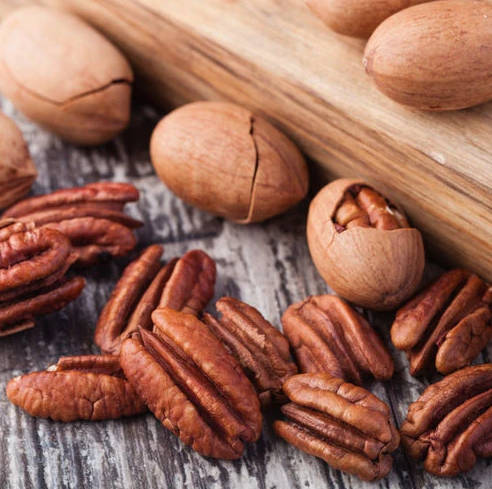
| Nut Type | Net Carbs (per 28g) |
Protein (per 28g) |
Fiber (per 28g) |
Fats (per 28g) |
Oxalate (per 28g) |
General Notes |
|---|---|---|---|---|---|---|
| Pecan | 1.1g | 2.6g | 2.7g | 20g | 10mg | Lowest carb and oxalate; moderate protein. |
| Macadamia | 1.5–2g | 2g | 2.4g | 21g | 12mg | Very low carb; low oxalate; highest fat content. |
| Walnut | 2g | 4.3g | 2g | 18g | 15mg | Moderate carbs, low oxalate, good omega-3s. |
| Pistachio | 4.7g | 6g | 3g | 13g | 14mg | High protein; moderate net carbs; low oxalate. |
| Almond | 2.6g | 6g | 3.5g | 14g | 120mg | High in protein and oxalate. |
| Cashew | 8.4g | 5.2g | 0.9g | 12g | 75mg | Highest carb; high oxalate; lowest fat content. Note: This is for roasted (which is most typical). |
| Brazil | 1.5g | 4g | 2.1g | 19g | 137mg | Very high oxalate; rich in selenium; low carb. |
More fat, etc.
Avocado. More “good fat” as well as many other diabetic and keto benefits. You can get the little tubs of guacamole at your local grocer. Or make your own.
MAKE YOUR OWN SALAD DRESSINGS
I tend to use some combination of the following ingredients:
– Mayonaise.
– Mustard.
– Sesame seed tahini.
– Vinegar.
– Olive oil.
– Turmeric & pepper.
– Salt.
With minimal research, you can find others.
Reduces insulin response. I add this to my coffee and anything else that might be sweet.
https://amazon.com/Premium-Cinnamon-Naturevibe-Botanicals-Gluten-Free/dp/B071HSW2MY
CHOCOLATE (BAKING TYPE/NO SUGAR)
For baking (with almond flour or coconut flour, NOT wheat flour!) or adding to your coffee for flavor. Oxalate warning.
EGGS
Very powerful in many ways to get the nutrients and “good fat” you need. Hopefully, you like eggs. I like em all ways, including fried (in coconut oil or olive oil) and hard boiled. Which brings me to…
MAYO
Good fats! Avocado oil mayo and olive oil mayo are best. Even your typical mayo has few or zero carbs.
KALE
Probably the best green leafy thing a diabetic can eat. To me, by itself, kale is too bitter. But hey fry it up in coconut oil, make kale chips in the oven, or put some fatty low carb dressing on it, add turkey or hard boiled egg, etc., and yum yum! There are enough other veggies that fall into low carb category. Don’t eat the others. You don’t need them. For example: eat only moderate amount of carrots in one sitting! https://google.com/search?q=keto+friendly+veggies
SPINACH
Warning! Spinach is super high in oxalates. Oxalates are inimical to human health. They can cause kidney stones, joint issues, skin issues, brain issues, and even cancer. Besides spinach, beans and nuts (yes, coffee) contain oxalates. See charts at bottom of this article showing oxalate content in popular greens and beans.

FRUIT
Fruit mostly bad. Mostly. As you probably know, most berries (including blueberries and strawberries) are better but still should be kept below 1/4 cup per day if you are eating ANY other carbs.
And really, for a diabetic or someone trying to do keto: I’d stay away from bananas (SUPERBAD), apples, peaches, plums, etc. Grapefruits are unique and have some pro-keto properties. Investigate for yourself.
FRUIT JUICES
NEVER drink fruit juices! Concentrated sugar (mostly fructose, which mostly goes to the liver) with no fiber. Superbad! You can increase the fiber/fructose ratio by blending berries* with things like ice, your favorite keto sweetener, ground flax (fiber), high fat nuts, and/or protein powder.
COFFEE & GREEN TEA
Good. Aid ketosis. Reduce free radicals. Etc. Be careful what you put in your coffee or tea. Milk will cause an insulin response. Full fat cream will not.
BEANS
Short answer: avoid beans. I’m not talking about green beans! I’m talking about pinto, kidney, lentils, etc. tend to be pretty carb heavy. But hey if you have had zero carbs that day and want a half cup of beans with your kale and salmon, go for it!
BREAD, PASTA, RICE, POTATOES
Easy answer: NO, NADA, NONE!
These items used to have far fewer carbs. Modern processed grains mess up our bodies. Part of the issue is the refining process. These modern processed and genetically modified grains irritate and even permeate the stomach lining; not good!
If you have a source of high quality old-school grains, then – watching your carb intake carefully – go ahead and have it as a treat from time to time. I recommend waiting until you have at least done keto to the point of having a consistently healthy diet and exercise routine.
Finally, in regard to breads, there are a number of great keto-friendly low-carb bread recipes out there that tend to use ingredients like almond flour, coconut flour, cauliflower, eggs, butter, and cheese. Just once try some buttery cheesy almond-flour bread and you will forever be changed!
Because of the reduction in various “foods,” keto people may find they need more fiber for better digestion and reduces the height of blood glucose spikes. I buy whole flaxseed and grind as needed because once ground, it can go rancid quickly.
https://amazon.com/gp/product/B07T2793YS
Speculation
Many scientists, health nuts, doctors, and wizards are claiming that the keto lifestyle has the following additional benefits:
– Reduce inflammation-related issues.
– Prevent cancer.
– Prevent Alzheimer’s. Many are now calling Alzheimer’s “Type 3 Diabetes”.
– Prevent heart disease & heart attacks.
– Increase sexual function.
– Slow aging.
– Levitate like this gal:

Research on your own + Latest info
The Keto lifestyle, while super old (like “paleo” diets, is based on a time when – for example – humans could probably only count on one meal every day or every other day), is newly popular and has become the subject of intense study, so a lot is being learned fast!
This guy knows his stuff and puts out a lot of content:
https://www.youtube.com/c/Highintensityhealth/videos
And this guy:
https://www.youtube.com/user/TheTdelauer
Another good one:
https://www.youtube.com/c/DrEricBergDC
Here’s another keto expert I recommend:
https://www.youtube.com/user/KenDBerry
I feel like I found the fountain of youth and I want this for everyone!
Disclaimer
I’m not a nutritionist, doctor, physicist, oceanographer, astronaut, or monkey therapist, so don’t go believing anything I say. Don’t even follow my advice, even if this article were advice, which it isn’t.
Oxalate content in greens & beans
Oxalates are inimical to human health. They can cause kidney stones, joint issues, skin issues, brain issues, and even cancer.
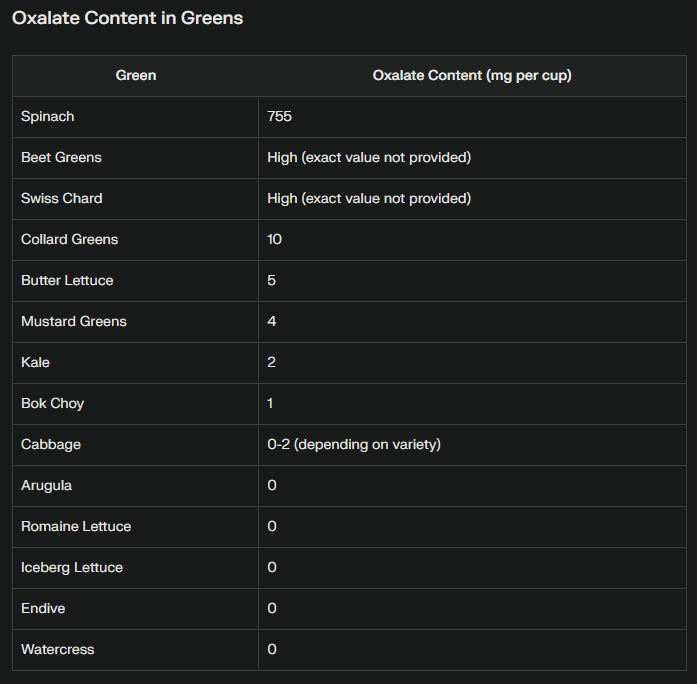
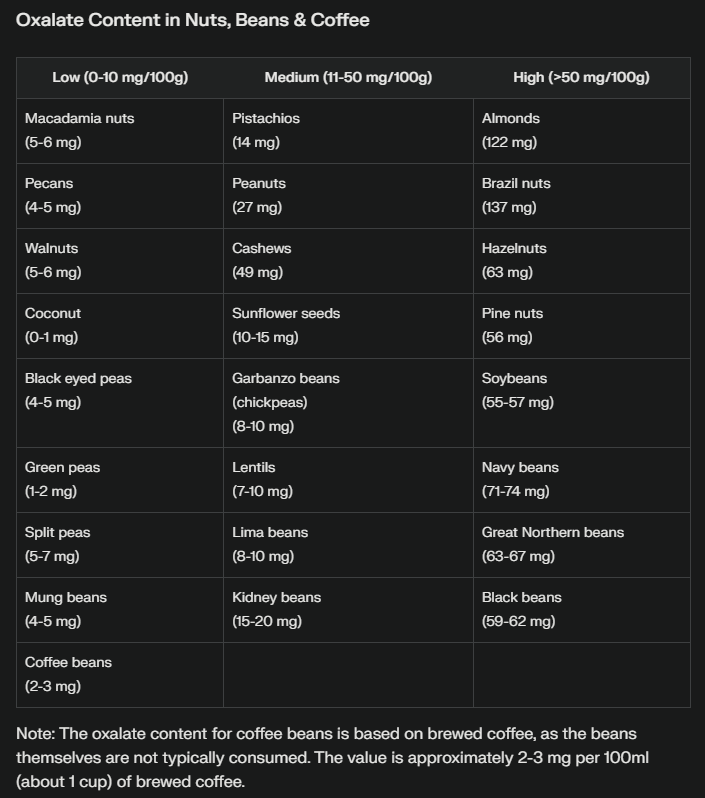
Finally, you are a rebel and a badass
Pat yourself on the back! This is not common knowledge. Keep in mind that we are working against the established paradigm. Every time you reshare this information, you may be losing friends or saving lives.

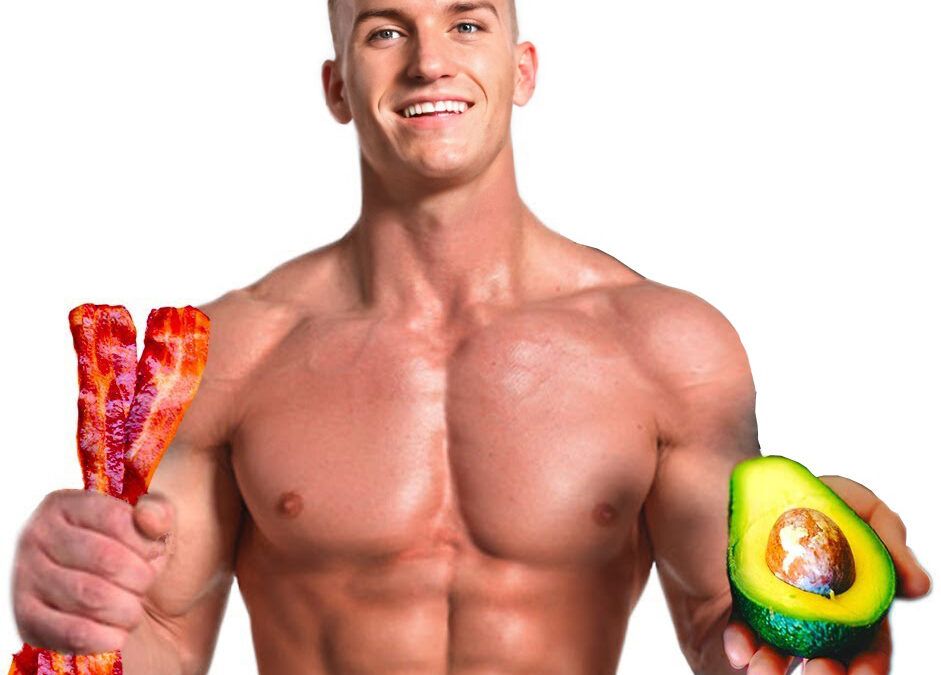

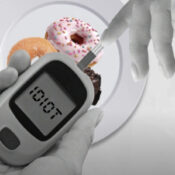








Recent Comments